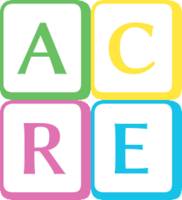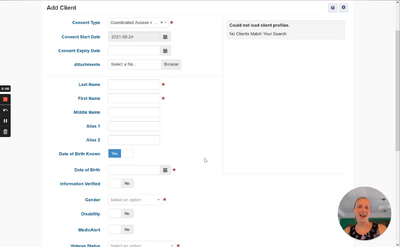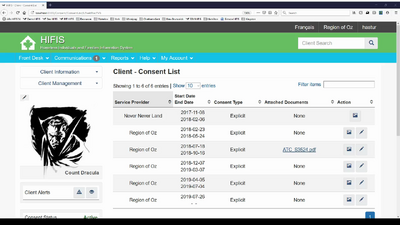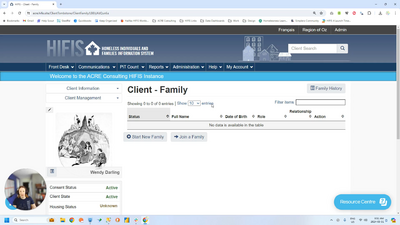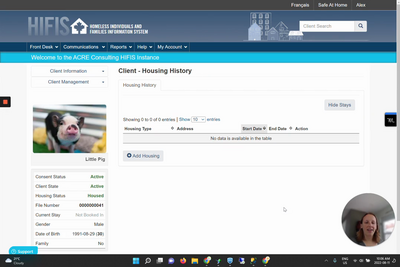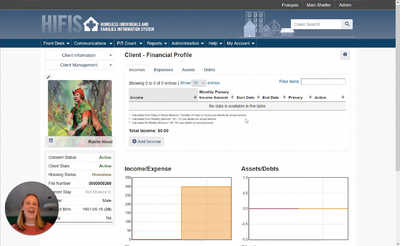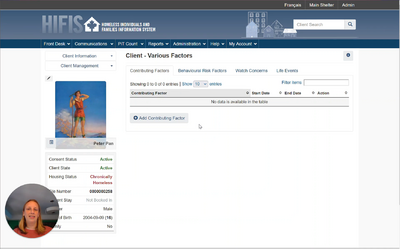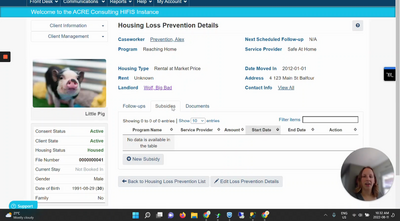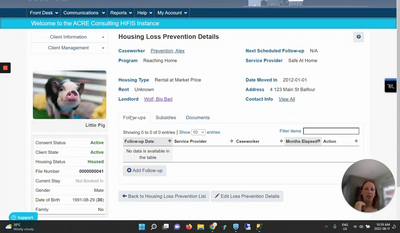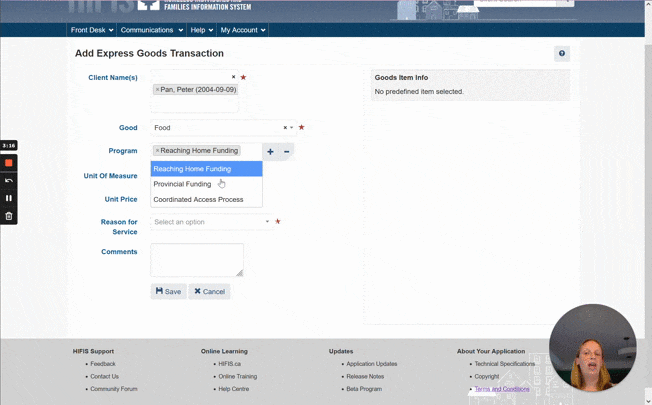Prevention/Diversion Worker Training
This course provides standard training for prevention and diversion workers in Nova Scotia and PEI. In 2.5 hours of content, it covers: adding clients, consent, families, and other client information; diversion; housing loss prevention; providing goods and services; and turnaways.
The Consent module is used to record any consent given or denied by the client related to service provider services. You can indicate if the consent was given, at which date and even attach signed documents.
The Family module is used to keep track of a client’s family members and the role each member has in the family. Family roles include dependant, family head and partner. When a client is linked to a family, they can be managed as a family unit for certain activities, such as book ins.
The Housing History module is used to keep track of the client’s past and present housing situation.
The Financial Profile module allows users to help clients manage their finances by tracking their income, expenses, assets and debts. Once values are added, visual representations of the client’s financial profile will appear.
The Diversion module is used to record when you attempt to find a more suitable shelter alternative for a client.
The Housing Loss Prevention module allows a case manager to issue housing subsidies and follow-up with the client.
Goods & Services offer ways for staff to record that they provided clients with tangible Goods or helpful Services that are not connected to an overall case plan.
The Turn Aways module is used to record when a client is denied service and the reasons why they were denied.
